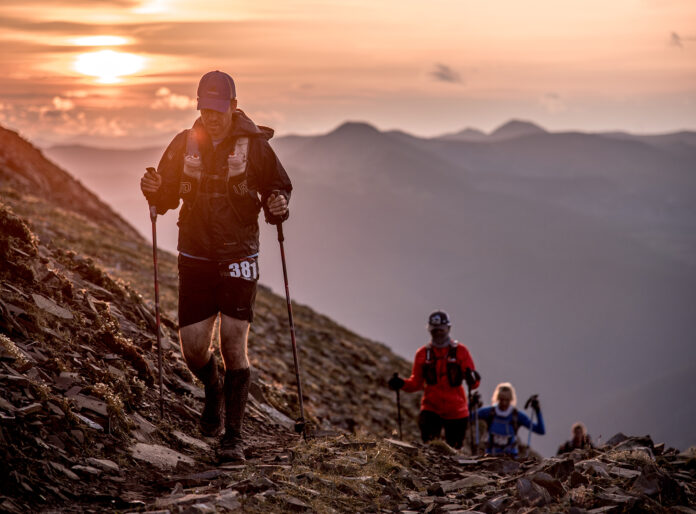
For 21 years, racers have come to the Canadian Rockies to cheat death in one of the world’s toughest ultramarathons. This year, in addition to bragging rights, race organizers are offering a $5,000 prize for a record-breaking solo finish. The men’s and women’s records have stood since 2010 for women and 2011 for men.
“You have to keep growing and innovating,” says race organizer, Brian Gallant. “We wanted to encourage more elite runners show up this year and potentially break the record. So a bigger cash prize [up from $1,000] seemed like a good incentive.”
Another new addition for 2020 is a green partnership between race organizers Sinister Sports and HydraPak and GU to get rid of individually packaged gels. Instead, each racer will receive a custom gel flask.
The 125km course begins and ends on a 4200-foot plateau in Grande Cache, AB, passes over three mountain summits, and not only includes over 17,000 feet of elevation change but a major river crossing at the spectacular Hell’s Gate canyon at the confluence of the Smoky and Sulphur Rivers.
Racers can compete solo or on a relay team with each running one or more of the five stages. There is also a 42km Near Death Marathon category, and after the main event is the 5km Kids Death Race.
The race is modelled on the idea of cheating Death and earning salvation. Racers carry a coin throughout their journey, which they use to pay the Ferryman in order to be allowed on the boat that takes them across the Smoky River. Volunteers take this role literally, dressing up as the Grim Reaper, and often scaring runners while silently taunting them in the middle of the night. Once you have paid the Ferryman, you are on your way to salvation: the finish line.
“Twenty-one years is a long run for a race,” Gallant says. “You build up a lot of history and traditions in that time. Throughout its history, the heart of the Canadian Death Race is a love of our shared Rocky Mountain heritage, a desire to explore, and a belief in the ability to overcome insurmountable obstacles.”
“There is something special about the Canadian Death Race and the people who race it, volunteer at it and support it in so many ways,” says Steve Baker, a 20-year veteran of Canadian Death Race. “It goes much deeper than the amazing trails that wind around, up and over the mountains surrounding Grande Cache. Those who have experienced the CDR know all too well that the supportive culture of trail running flows freely throughout the race weekend and it truly epitomizes my belief of ‘it’s not about the run’.”
In the past 21 years, the race has also inspired three generations of runners. Many of the original competitors had their children run in the first Kids Death Race; now those kids are grown up, running, and entering their kids in the race.
“I love it because even though it’s a very technical race, it’s also very fast,” says Josefina Kaderabek, a former podium finisher. “There is constantly changing topography, hard climbs for wicked rewards and lots of places to have family and friends cheer you on. There’s just no part of the race I feel is drawn out. As soon as you think you can’t climb another step, you start to hit flat or down, and when your quads light on fire from the downhill you start to climb again! There’s suffering for sure, but the reward and views are greater.”
Hiroshige Watanabe is another long-time Death Racer who enjoys the feel of the community as much as the race. “I like not only race itself, but also the energy entire town and surrounding nature gives me. Over the years, I’ve developed great relationships with people who live there.”















